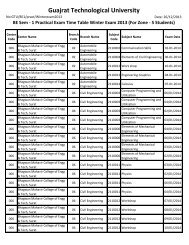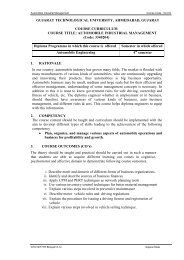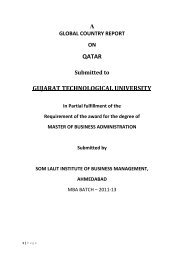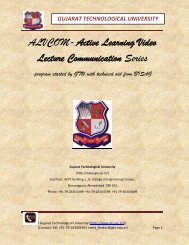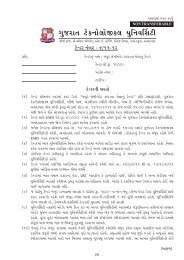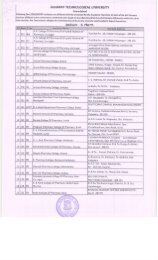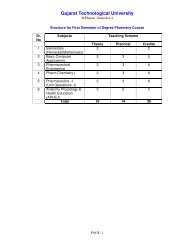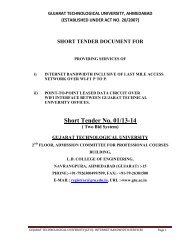751-Sabar Institute Of Management, Tajpur - Gujarat Technological ...
751-Sabar Institute Of Management, Tajpur - Gujarat Technological ...
751-Sabar Institute Of Management, Tajpur - Gujarat Technological ...
You also want an ePaper? Increase the reach of your titles
YUMPU automatically turns print PDFs into web optimized ePapers that Google loves.
Industry segments in 2010: 20% fine chemicals and specialty chemistry, 24% polymers, 30%<br />
pharmaceuticals, 13% petrochemicals, 7% detergents and body care, and 6% inorganic basic<br />
chemicals. In 2011, some two thousand chemical companies - 90% small and medium-sized -<br />
employed just over 425,000 people, (2.5% increase on 2010). The domestic industry exported<br />
EUR 150.9 billion in 2011, while 2011 imports amounted to EUR 109 billion. In 2010, chemical<br />
products provided the largest percent of total manufacturing imports in Germany with 12.7 % -<br />
ahead of both crude oil and natural gas (7.5%) and motor vehicles and components (7.4%).<br />
Regulatory framework for chemical industry in Germany<br />
Chemical Business Regulations in Germany have mostly resulted from the implementation of<br />
European Union legislation.<br />
Swift Construction-Planning Procedure<br />
At present, around 60,000 industrial plant facilities in Germany have received formal<br />
authorization in accordance with both European and German law. The authorization process in<br />
Germany has been radically streamlined and simplified for investors in recent years. Today, all<br />
facility-related approvals and permits (covering industrial safety, construction, emission control,<br />
fire protection, and occupational health and safety) are covered by a single application submitted<br />
to one authority. A permitting authority is bound by law to grant approval within a maximum<br />
period of seven months after the completed documents have been submitted.<br />
REACH<br />
REACH is the Regulation on Registration, Evaluation, Authorization and Restriction of<br />
Chemicals. The regulation centralizes and simplifies chemicals legislation throughout Europe.<br />
The stated objective is to improve the level of knowledge about the potential dangers and risks<br />
posed by chemicals. Companies are expected to assume even more responsibility for the safe use<br />
of their products..<br />
REACH-CLP<br />
The EU Regulation on Classification, Labelling and Packaging (CLP) of Substances and<br />
Mixtures more commonly known as the “CLP Regulation” introduces the globally harmonized<br />
system (GHS) of the United Nations for the classification and labelling of chemicals into the EU<br />
and is in effect in all EU member states. The objective of the CLP is to guarantee a high level of<br />
protection of human health and the environment as well as the free movement of substances,<br />
mixtures and certain specific articles within the EU.<br />
45



